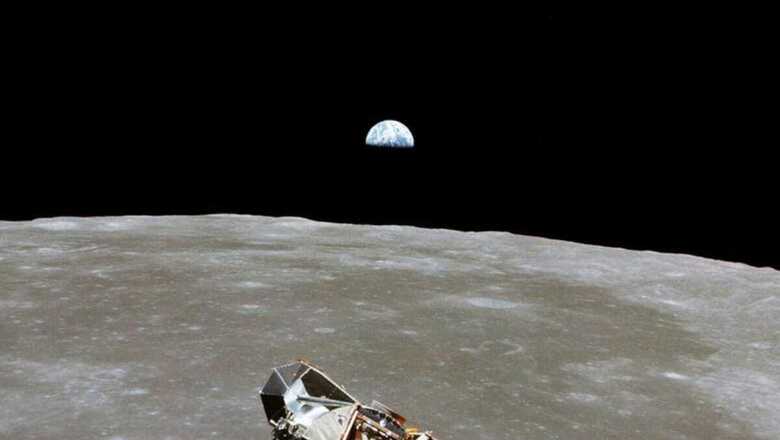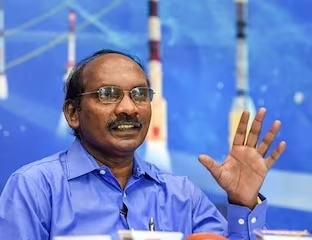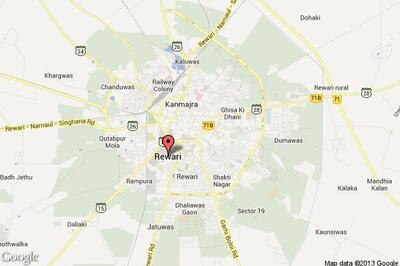
views
The Indian Space Research Organisation has silently worked over the past four years to launch Chandrayaan 3, India’s ambitious project to land on the moon and get a rover to carry out scientific experiments to study the lunar environment. The man who headed Chandrayaan 2 and oversaw preparations for Chandrayaan 3, former ISRO chairman K Sivan, spoke exclusively to News18 about the launch and the work that followed after the last mission failed. Edited excerpts:

Ever since the failure of Chandrayaan 2 in 2019, how has the journey been over the past nearly 4 years, especially for the team which is working on the project?
Over the past four years, tremendous work has been done. And the first and foremost one was that in Chandrayaan 2, the landing phase was not successful, whereas the orbital mission was partly successful. The data that we gathered during that time, that data was analysed very thoroughly, understood what really went wrong, and now for each problem that we observed corrective actions have been taken. Not only that, wherever the margins are less, the robustness level was increased.
In the past four years, these works were done very thoroughly, meticulously, and then the tests have been done very exhaustively and ensured that everything is intact. With this confidence, now the ISRO is going for the next mission, Chandrayaan 3.
ISRO has spent a lot of time looking at what went wrong in Chandrayaan 2. What really went wrong, according to you? Things that you can explain to a common man.
Basically, there were a few things, not only one problem. One was the propulsion system. Dispersion in the propulsion system in certain regions of the flight was more than what we expected, that means in that total landing phase we had four phases: one is that rough breaking phase where the maximum velocity has to come down, then the altitude hold phase, then fine breaking phase, then landing phase. Like that four phases are there.
In the rough breaking phase, this propulsion system worked very nicely without any problem. In the altitude hold phase, yes, that time also propulsion system worked very nicely, but the dispersion level was sometimes more than what we assumed before the flight. This was one problem and because dispersion levels were more than expected, the guidance software was not able to handle it properly, so it was misbehaving. Instead of correcting, instead of reducing the thrust level, it was increasing the thrust level. So, our guidance software misbehaved. Along with the guidance software misbehaviour, with the control systems also there were limitations. All these three things combined made this landing a hard landing. If anyone of the issues was not there, the mission would have been a success. We have understood the total data, analysed the data, and understood the problem. Now corrective actions have been taken considering all these issues.
You talk about corrective actions; any changes to either the rover or the lander apart from the corrective steps that you mentioned?
Yes. Some improvements were made to overcome the problem. From what we have seen, we have added more redundancy. Suppose one system is failing, the data will be taken from the other system. This redundancy has been increased. The allowable dispersion level is enhanced, the leg design has been modified to withstand higher landing velocity also.
So you are saying if in case the lander lands with a higher speed, it can still withstand the impact?
Higher speed, yes, but not like very large speed, like earlier it could withstand up to 2 metres/second velocity, now that has been increased to 3 metres/ second. Some extra margins have been built in the allowable limit within the capacity, within the correctable actions. Robustness margins have been increased in this one.
For the whole team, how different will this Chandrayaan 3 be?
Actually, when we went ahead with the Chandrayaan 2 also, people had confidence that it will be going without any problem because space scientists always go ahead with the mission after ensuring that whatever problem is encountered will be corrected and with that confidence only we go through. In Chandrayaan 2 also we went through like that. But the space system is hard always in the first mission, we always learn something that wouldn’t have come out on the ground, it will happen only in the flight. That’s what we used to call unknown unknowns. So this type of thing comes in the first mission. So for us, unfortunately, it ended up with a mission failure, but we have learnt a lot of things. We have full confidence that this time it will be successful because we know that all the issues that we faced are corrected and also additional margins have been increased.
How easy or difficult was it to motivate the team? We saw the Prime Minister being present when the mission failed, you got emotional, and after that, you got back to work. What were the challenges according to you?
The main challenge was analysing the data, going through the data and finding out the exact cause, that’s a real challenge. We used to get a huge amount of data for a flight and each byte of data was analysed to understand what really went wrong. So, every aspect was looked into very carefully so that no stone is unturned. They recreated the problem at the lab level.
Just to put this in context for us, India can showcase that it can attempt and successfully carry out a soft landing on the surface. How important is this?
First of all, demonstrating this, that India has acquired one more technology of landing on a celestial body, this technology we have gained…these are the big lessons we have, so it will have a future prospect of landing sometimes, a man landing on the moon like that. The second point is scientific measurements, science about the moon, observing from a particular orbit, etc. Now by landing, we can do experiments. The more scientific experiments we do, the more we will get to know about the moon, for future generations.
Chandrayaan 3 is the focus now, but I want to ask you about two other important projects of ISRO. One is Gaganyaan that’s also in the works right now. What can we expect?
We wanted to ensure that the vehicle wherein they are travelling, the launch vehicle, that should be of human-rated level, reliability level. Otherwise, we are able to launch only spacecraft, now humans too are being launched, so obviously reliability level will be higher, so it will be human-rated. So that is one technology. Another one is the technology where we need to create an environment which is easy for the people to survive, that is a crew module and environment control life support system is another system. And also when we are launching them, in case there’s some emergency and we ensure that these astronauts are back safely, escape from the system and brought back safely, then the fourth one is that is after the mission is over, this astronaut should be brought down, and ensuring that they are passing through a very adverse environment of heavy heat and land at the exact location. So here, a huge amount of technology development is required.
For the past five years, this is a huge amount of work has been carried out, and now that the project is in the testing phase where we need to do a lot of tests with the system…and once these tests are completed, then we will be going for the mission, Gaganyaan.
The other ambitious project of ISRO is NISAR, a joint effort with NASA. Probably one of the costliest projects we have ever seen in recent times. How important is it for the country and ISRO?
Actually, this particular programme is an excellent collaborative programme between NASA and ISRO for making a combined satellite, NISAR. The payload is from our side and the main part of the payload is from NASA and it will be launched by ISRO. This is the costliest observational satellite built so far, across the globe. And this particular satellite’s special feature is that it can identify even a one-centimetre movement on the surface of the Earth from a height of around 700 km, and it will be giving so much information about climate change, earthquakes, and glacier melting. Such data will be available much before any major event and such events can be predicted using this information. So this satellite is not only going to give information to US or India. Once it is put into service, it will be useful globally, which is so important for humanity.


















Comments
0 comment